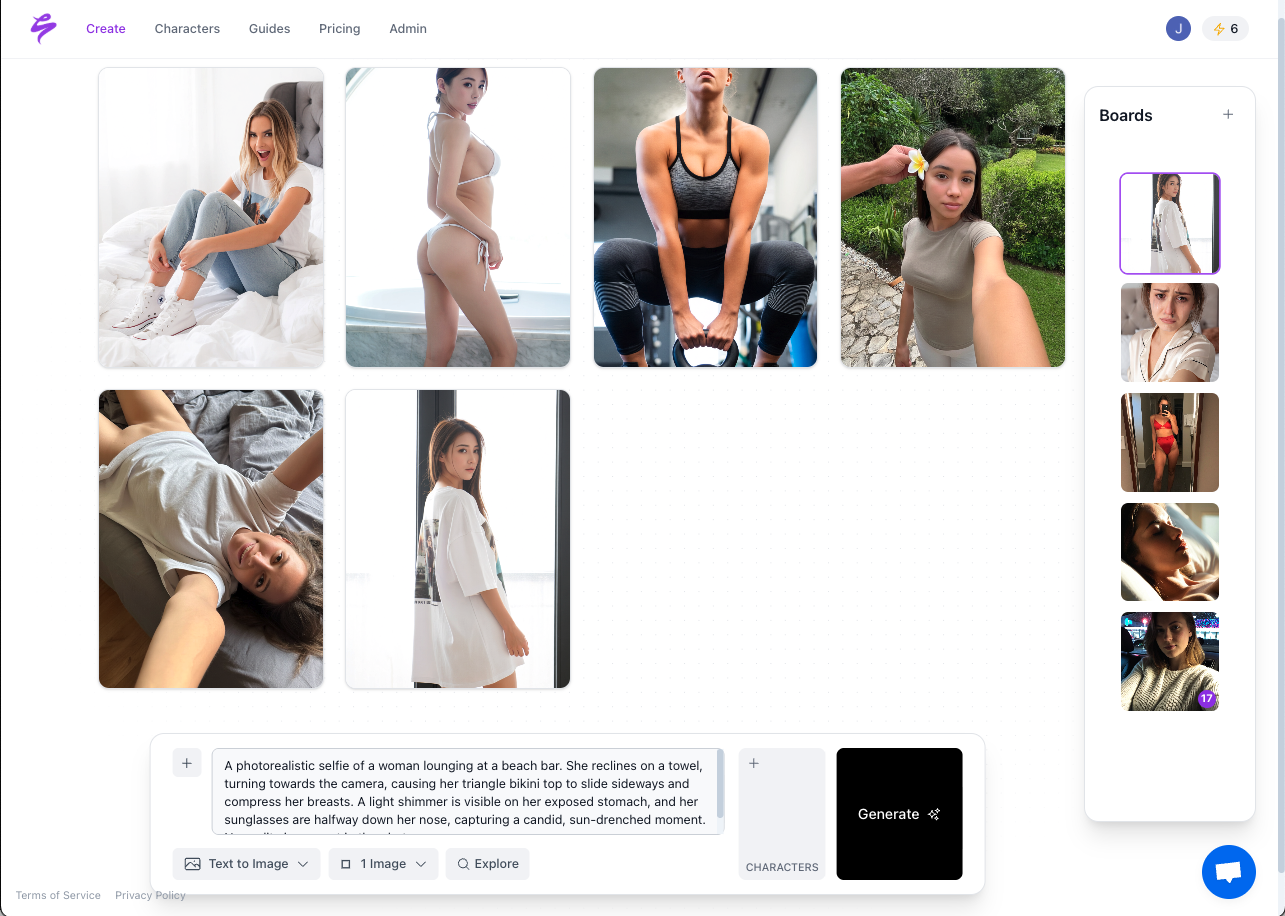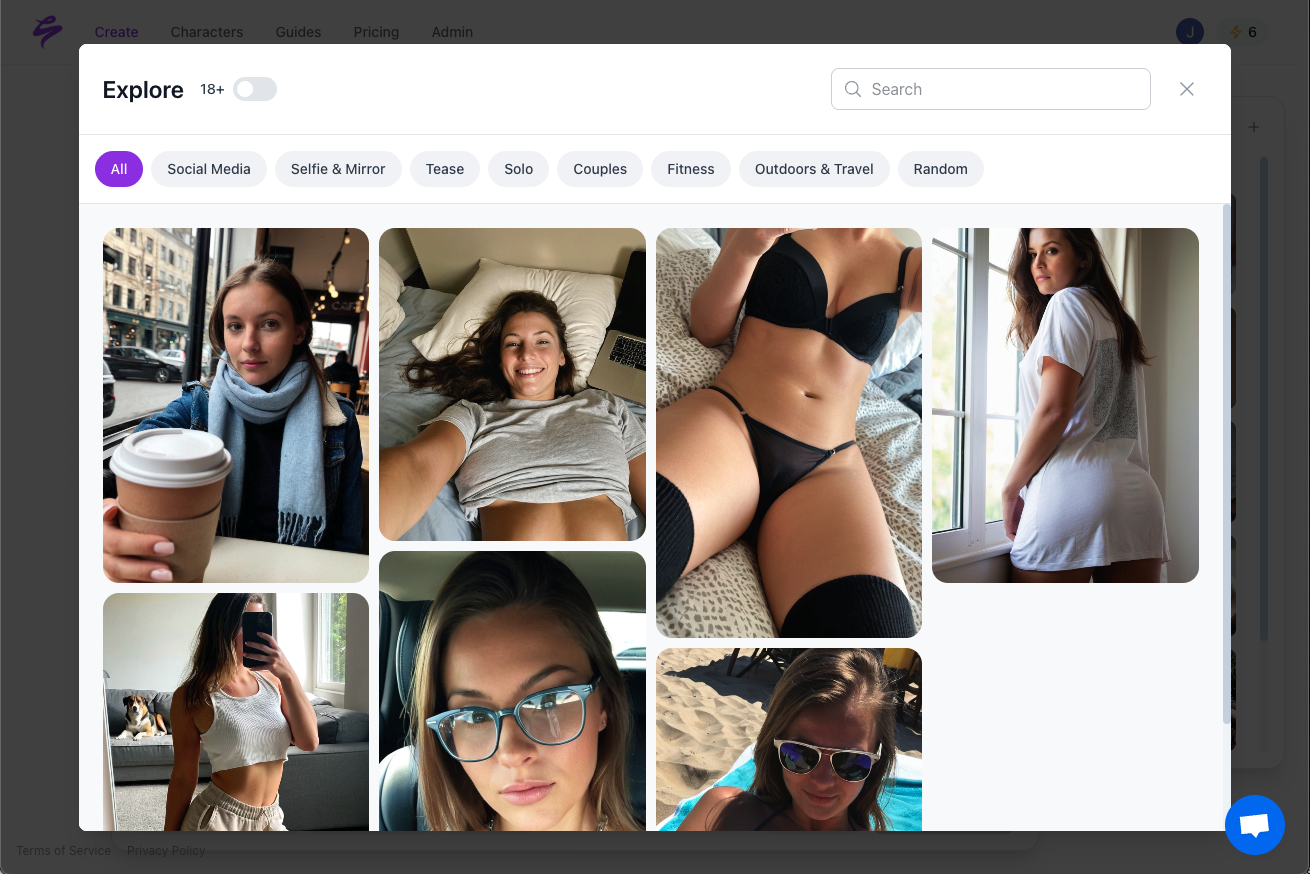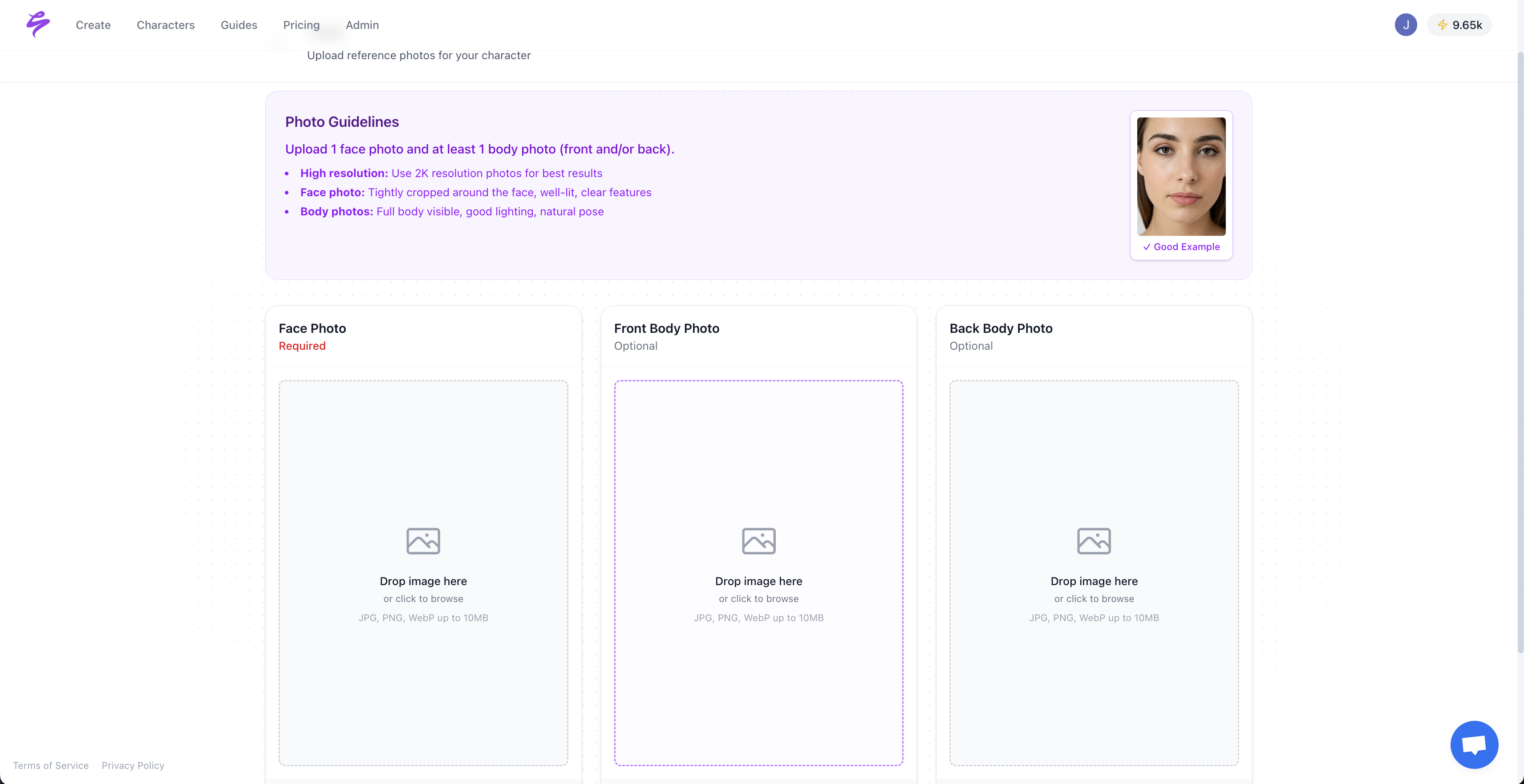Key Takeaways
- Content demand in the creator economy far exceeds what traditional video production can support, which leads to burnout and stalled growth.
- Effective AI videography tools focus on speed, realism, ease of use, privacy, monetization workflows, and consistent branding.
- General text-to-video tools, AI editors, and avatar platforms each offer value, but they often fall short on likeness accuracy and creator-focused monetization features.
- Sozee.ai focuses on hyper-real photos and videos from a few reference images, with privacy-first models and workflows tailored to creator platforms.
- Solo creators, agencies, and virtual influencer builders benefit from different tool features, so a clear decision framework helps match tools to business goals.
- AI videography expands content capacity so creators can spend more time on strategy, audience relationships, and revenue generation.
The Content Crisis: Why Rapid Video Production is No Longer Optional
Creator Demands vs. Production Realities
The modern creator economy runs on a simple equation: More Content = More Traffic = More Sales = More Revenue. Fans behave as if creators can publish nonstop, so demand for content can exceed supply by large margins. This gap forces many creators into a cycle where their time and energy strictly limit how much they can earn.
Limitations of Traditional Video Production
Traditional video production consumes time and resources through equipment, locations, lighting, and post-production editing. Creators who post across several platforms can struggle to keep a consistent schedule under these constraints. Agencies that manage many creators feel this even more when talent is unavailable or overbooked.
AI Videography as the Solution
AI videography tools help decouple a creator’s physical availability from their publishing schedule. These platforms generate high-quality video content without constant access to sets, cameras, or full production teams. Start creating unlimited content today and reduce how much time each piece of content requires.

Essential Criteria for Evaluating Rapid AI Video Production Tools
Speed & Efficiency: Time-to-Content Ratio
Fast content output matters most for rapid video production. Tools should let creators move from idea to publish-ready content in minutes, not days. This efficiency raises content volume without extending working hours.
Quality & Hyper-Realism: Avoiding the Uncanny Valley
High-realism content protects audience trust and monetization potential. The strongest tools focus on lighting, skin detail, and natural movement so videos look like real shoots. Viewers should not feel a distracting gap between real and generated footage.
Ease of Use & Workflow Integration
Simple workflows keep creators focused on ideas instead of software. The ideal tool uses clear interfaces, minimal setup, and no required technical training. Smooth export options and integrations also help content move quickly into existing publishing routines.
Privacy & Security: Protecting Likenesses and Data
Creator likenesses act as valuable assets that need strong protection. Leading platforms isolate each creator’s model, avoid using it to train other systems, and apply clear data controls. This structure helps preserve long-term ownership of personal image and content.
Monetization Focus: Built for Creator Business Models
Monetization-focused tools align with how creators actually earn. These platforms support funnels, paywalled content, custom requests, and agency review flows for sites such as OnlyFans, Fansly, TikTok, and Instagram. This alignment speeds up the path from content ideas to revenue.
Consistency & Scalability: Maintaining Brand Across Content
Consistent visual identity strengthens a creator’s brand. Effective tools save specific styles, outfits, and scenes for reuse at scale. This repeatability keeps content recognizable while still allowing creative variation.
Head-to-Head: Comparing Leading AI Videography Tools for Rapid Production
General Text-to-Video Generators (e.g., Google Veo, Runway, Sora)
General text-to-video tools generate full scenes from short prompts, with platforms like Google Veo delivering cinematic-style visuals and detailed imagery. These tools support quick ideation, wide creative exploration, and fast output for concept testing.
The main tradeoff is generic or inconsistent results when a creator needs precise likeness and branding. These systems can interpret prompts well but may struggle to maintain a consistent look and feel across large batches of content. Many also lack workflows designed around subscription content, custom fan requests, or creator-specific monetization paths.
AI-Powered Editing & Enhancement Tools (e.g., Descript, Topaz Video AI, Adobe Premiere Pro AI)
AI-assisted editors focus on improving and assembling footage rather than generating it. Tools in this group automate tasks like scene detection, audio cleanup, and upscaling, with platforms such as Adobe Premiere Pro adding AI-based editing features.
These tools shine in post-production by saving time on repetitive edits or quality fixes and by features like automatic silence removal in tools such as Loom or Pictory. They still require raw footage, so they improve workflows but do not solve the need for net-new content when a creator cannot be on camera.
Avatar-Driven Video Platforms (e.g., Synthesia, HeyGen)
Avatar platforms specialize in script-to-video workflows with AI presenters. Providers like Synthesia focus on avatar-driven explainers and training content, which work well for tutorials, onboarding, and company updates.
These platforms often use stock avatars that look polished but less lifelike than real footage. Custom avatars may require extra training time and cost, and many systems focus on corporate communication rather than creator monetization. This focus can limit how well they support bespoke, fan-driven content pipelines.
Sozee.ai: The AI Content Studio for the Creator Economy
Sozee.ai centers on hyper-real photo and video generation based on a creator’s real likeness, with only a few reference images required. Creators can get started with just three photos and begin generating content without waiting for model training or complex setup.


Sozee supports creator-specific workflows such as SFW-to-NSFW funnels, custom request fulfillment, and agency approval processes. The platform focuses on privacy-first models, consistent branding, and exports optimized for sites like OnlyFans, Fansly, FanVue, TikTok, Instagram, and X. Get started with hyper-realistic content creation now and align your content pipeline with your revenue goals.


|
Feature |
General Text-to-Video |
Avatar Generators |
Sozee.ai |
|
Likeness Accuracy |
General scenes |
Generic or custom-trained avatars |
Hyper-realistic likeness from 3 photos |
|
Setup Time |
Instant via prompt |
Hours or days for custom avatar |
Instant, no training required |
|
Monetization Focus |
General creative content |
Explainer and training videos |
Creator-focused business models |
|
Privacy Protection |
Varies, models may be shared |
Depends on provider |
Private, isolated creator models |
Decision Framework: Choosing the Right AI Videography Tool for Your Monetization Goals
For Solo Creators: Maximizing Output with Minimal Effort
Solo creators benefit most from tools that keep setup and maintenance low while quality stays high. Platforms should offer:
- Fast content generation from simple prompts or scripts
- Minimal technical steps between idea and finished video
- Results that match the creator’s real look and style
This balance helps individuals meet demand without sacrificing authenticity or burning out.
For Agencies: Scaling Content, Ensuring Consistency, and Streamlining Approvals
Agencies need systems that support multiple creators and brands at once. Helpful capabilities include:
- Centralized dashboards for managing several creator profiles
- Built-in approval workflows for managers and clients
- Repeatable templates that preserve each brand’s look and guidelines
These features keep production predictable at scale while protecting quality and brand standards.
For Virtual Influencer Builders: Building Hyper-Real, Consistent, and Monetizable Personas
Virtual influencer teams look for tools that can support a character over years of content. Strong options offer:
- Hyper-real, stable likeness across photos and videos
- Control over poses, outfits, and settings for each persona
- Output formats that align with sponsorships, subscriptions, and merchandise
This structure lets virtual personas publish frequently and grow like full media properties.
Assessing Total Value of Ownership
Thoughtful evaluation looks at more than headline features. Useful factors include:
- Time saved in production and approvals
- Reduced need for equipment, locations, and reshoots
- Increased capacity to meet fan requests or niche content ideas
- Impact on long-term earnings and creator retention
Explore the right AI videography platform for your needs and weigh both short-term output and long-term business value.
Frequently Asked Questions About Rapid AI Video Production
How realistic is AI-generated video content in 2025, especially for human likenesses?
AI-generated video can now reach a level that is difficult to separate from real shoots when the tool prioritizes human likeness. Specialized platforms focus on camera behavior, lighting, and skin detail to keep content out of the uncanny valley. Systems built for creator likeness recreation usually deliver more convincing results than general-purpose generators.
What about privacy and data security when providing your likeness to AI tools?
Privacy standards differ across providers, so creators need clear information on how their data will be used. Platforms that keep each creator’s model private and isolated, and that avoid using it for broader model training, give creators more control. This approach protects personal image rights and reduces risk over the long term.
Can AI videography tools handle a creator’s unique style and consistency over time?
Many general tools still struggle with style consistency over long periods or large content libraries. Creator-focused platforms address this by saving styles, camera angles, and moods for reuse. These features keep content recognizable across months of publishing while still allowing experimentation.
Are rapid video production tools easy for non-technical creators to use?
Modern AI video platforms increasingly use no-code, visual interfaces that feel approachable. The most accessible options avoid command-line tools or complex settings and instead guide users through a few clear steps. After initial photo uploads or references, many creators can publish new content with only a few clicks.
How do these tools integrate with existing creator monetization platforms?
Creator-focused AI tools often include presets for export formats and aspect ratios that match major platforms. Strong options support workflows tailored to OnlyFans, Fansly, FanVue, TikTok, Instagram, and X, including funnel content and premium posts. This alignment shortens the path from generated content to published, monetized posts.
Conclusion: Scale Your Content, Not Your Effort, with the Right AI Partner for Rapid Video Production
AI videography now gives creators a way to meet constant content demand without relying only on live shoots. Traditional production alone rarely keeps pace with multi-platform posting, custom fan requests, and continuous audience growth.
Sozee.ai helps creators, agencies, and virtual influencer teams address this pressure with hyper-real content generation, privacy-focused models, and monetization-aware workflows. The platform centers on the needs of the creator economy rather than general entertainment or corporate use cases.
Learn more about Sozee.ai today and shift from production bottlenecks to a scalable content engine that supports your strategy, audience growth, and business goals.
